Evolving Upstream Dynamics Spurred by Export Markets
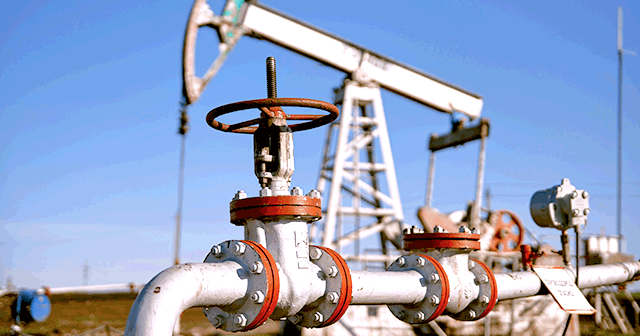
U.S. crude oil production peaked during the final two months of 2019 at 13 million bpd before dropping below 10 million bpd five months later during the COVID lockdowns. As West Texas Intermediate (WTI) futures averaged more than $100 bbl for five months in 2022, domestic crude output would climb only gradually, reaching 12.4 million bpd during the fourth quarter.
Quicker output growth was partly thwarted by a shortage of workers, with oilfield services and equipment employment growing to 652,090 in January, but still more than 50,000 below February 2020, when the sector employed 706,528 workers, according to the Energy Workforce and Technology Council. In its Short-term Energy Outlook released in February, the Energy Information Administration (EIA) doesn’t expect U.S. crude production to top 13 million bpd on a quarterly basis over the next two years, despite a projected decline in Russian crude output that is seen pressured lower by sanctions and embargos for Moscow’s illegal aggression in Ukraine. EIA expects Russian oil and liquids production to decline this year by 1.07 million bpd or 9.8% to 9.87 million bpd.
EIA forecasts 2023 domestic crude production to climb a stout 590,000 bpd year-on-year to 12.49 million bpd and then edge up 160,000 bpd or 1.3% annually in 2024 to 12.65 million bpd. Most of the growth in production is expected from the Permian Basin, where operators have consolidated amid a strong wave of acquisitions, with oil output in the basin averaging 5.635 million bpd in February.
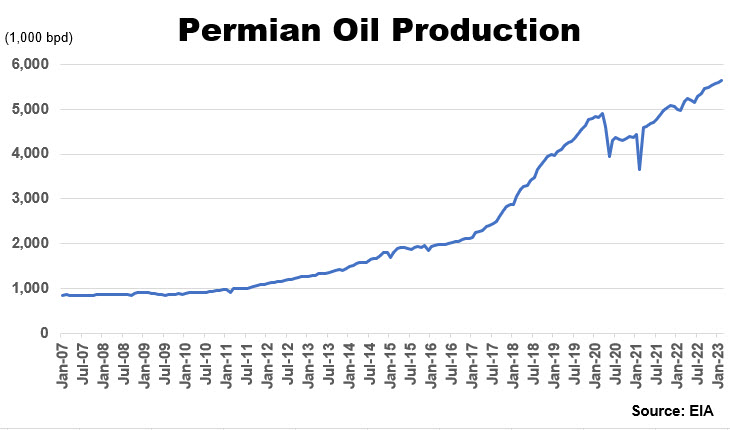
Permian oil production
The Baker Hughes weekly oil rig count for North America illustrates the gradual pace in U.S. oil production growth, hobbled by rangebound trade for WTI futures since late November 2022. Typically, there is a 15 to 20-week lag between a change in WTI futures price and a change in the number of active rigs. Yet, as Rusty Braziel with RBN Energy LLC noted in a January blog, the rather recent phenomenon of “producer discipline” will throttle output growth as publicly traded exploration and production companies cut drilling budgets to reward shareholders.
“Producer discipline is now a powerful, permanent force in the U.S. crude oil market and production is now much less sensitive to price,” said Braziel, adding that this change in behavior “has big implications for 2023 and beyond.”
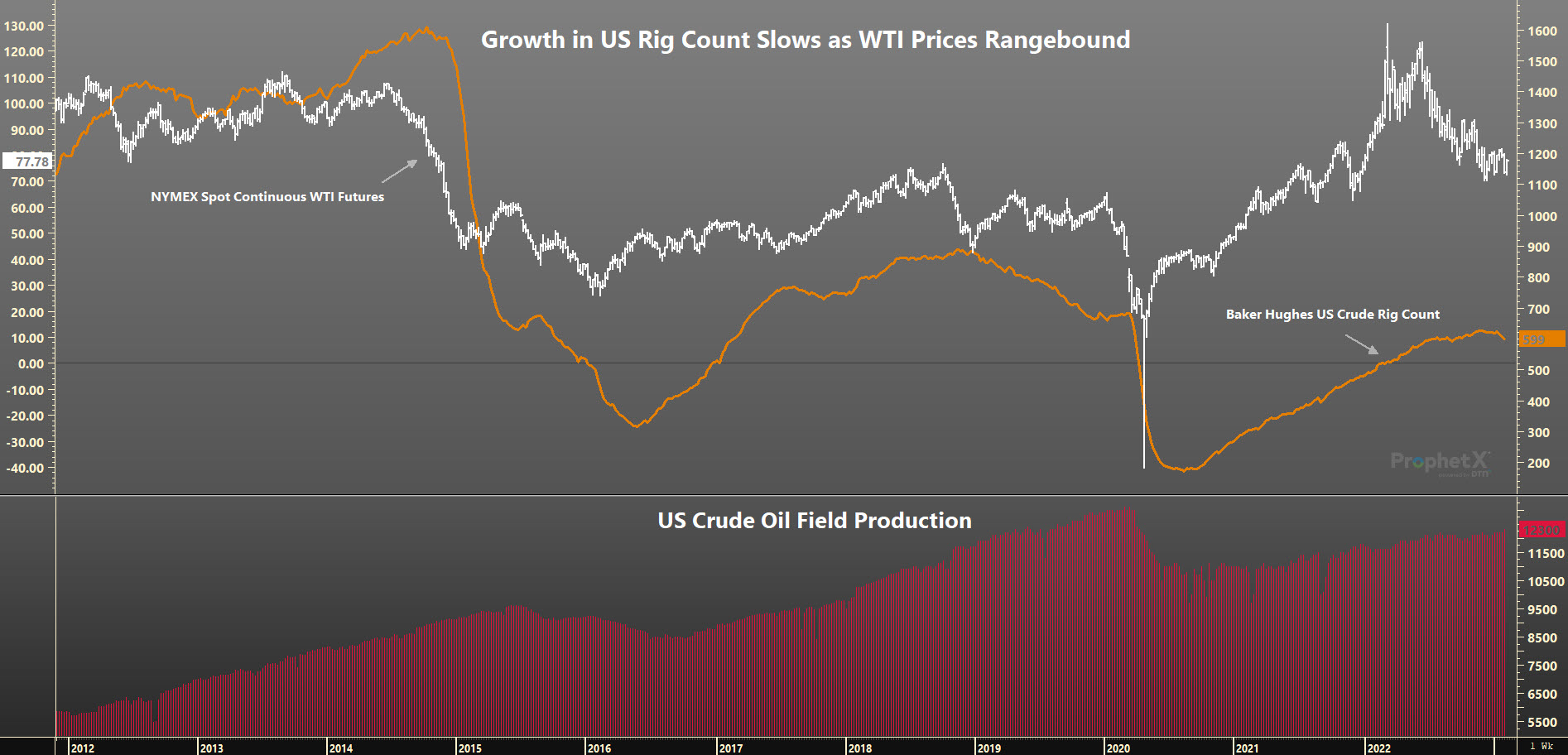
Growth in U.S. rig count slows as WTI prices rangebound
RBN Energy’s Jason Lindquist noted in a blog series on the oil releases from the Strategic Petroleum Reserve in 2022 (directed by President Joe Biden following Russia’s invasion of Ukraine) that those drawdowns from emergency reserves “may have also had the unintended consequence of hampering the acceleration of production.”
U.S. oil producers will certainly contend with competition from OPEC.
U.S. consumption of oil products is seen flatlining over the next couple of years, with gasoline consumption in 2023 seen flat at 8.76 million bpd and at 8.73 million bpd in 2024, even as vehicle miles traveled grow. Gasoline consumption averaged more than 9.3 million bpd from 2016 to 2019. In early January, in response to a question about the effects of work-from-home dynamics at Goldman Sachs Global Energy and Clean Technology Conference, Jeff Dietert, vice president of Investor Relations with Phillips 66 Company said, “We’ve not seen commuters go back to that 33% that was a pre-pandemic component of overall U.S. gasoline demand.”
U.S. refining capacity declined by 700,000 bpd from 2019 to 2021 as lost demand during the pandemic prompted refinery shutdowns by Shell Oil Products US, closing their 211,146 bpd Convent refinery in Louisiana, and Phillips 66, who shut down their 255,600 bpd Belle Chasse refinery, also in Louisiana. Several refiners have or will convert units to produce renewable diesel that processes cooking, vegetable oils, and animal fats instead of crude oil, further reducing domestic demand for crude oil.
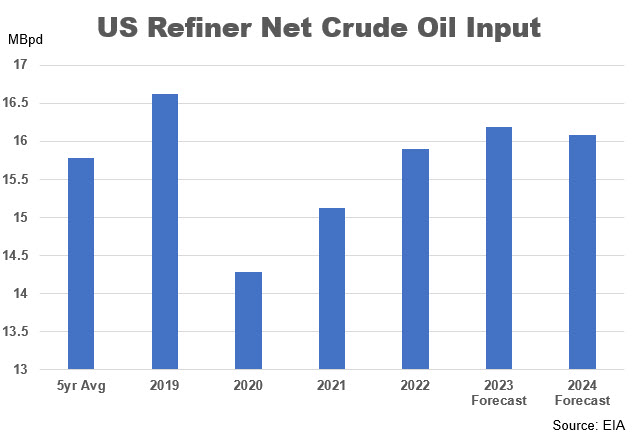
U.S. refiner net crude oil input
Federal incentives to blend more renewable fuels are bolstered further along the West Coast by generous state credits to encourage the move away from petroleum. The incentives could lure in enough renewable diesel to dominate the diesel market along the West Coast.
“An average 520,000 b/d of distillate fuel oil was consumed on the West Coast in 2021. The region, which is also the largest renewable diesel importing region in the United States, could soon meet the majority of its distillate fuel needs from renewable diesel by 2025 if domestic renewable diesel capacity does, in fact, increase as scheduled,” according to the EIA.
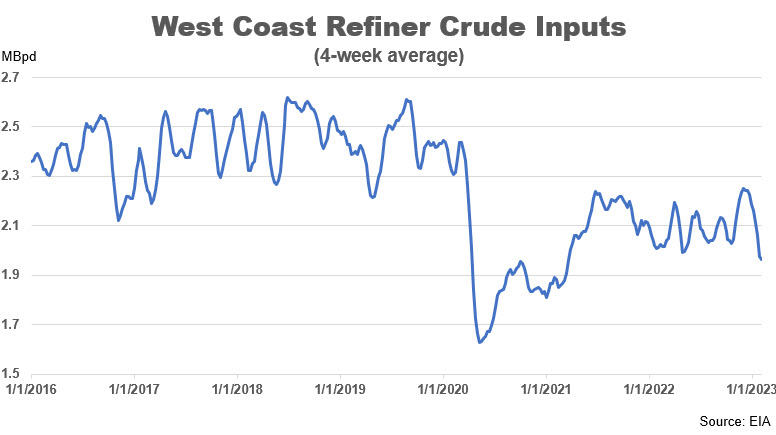
West Coast refiner crude inputs
As the U.S. slate of refining capacity rationalizes in the face of slowing domestic downstream demand for products, U.S. refiner demand for crude is also weakening, prompting a historic shift in market forces that govern decisions by producers as to where crude flows. U.S. crude oil flows are now dictated by the export market, with crude exports in 2022 and early 2023 well above the five-year average. This trend will strengthen moving ahead, especially considering expanding refining capacity outside the United States in Asia, the Middle East, Nigeria, and Mexico.
An industry buildout over the past several years to move oil from the prolific Permian Basin in western Texas and eastern New Mexico to market centers is helping to facilitate this new paradigm. There are four key markets for Permian oil: the Cushing tank farm in Oklahoma, and three locations along the Texas coastline at Beaumont, Houston, and Corpus Christi. With the pipelines largely constructed, shipping economics are now the key driver in adding value for Permian producers. Corpus Christi — which has the capacity to load very large crude carriers (VLCCs) that minimize the need for reverse lightering from smaller vessels — has seen a sharp increase in oil flow from the Permian Basin.
“That cost-efficiency edge has become increasingly important since the Russia/Ukraine war redirected crude flows into much less efficient routings, which has had the effect of blowing out ship charter rates, especially the rates for ships for smaller than the massive VLCCs, like Suezmax and Aframax vessels,” explains Housley Carr with RBN Energy in a blog in January. (VLCCs can load two million bbl compared with one million bbl for a Suezmax vessel and 600,000 bbl for an Aframax vessel.)
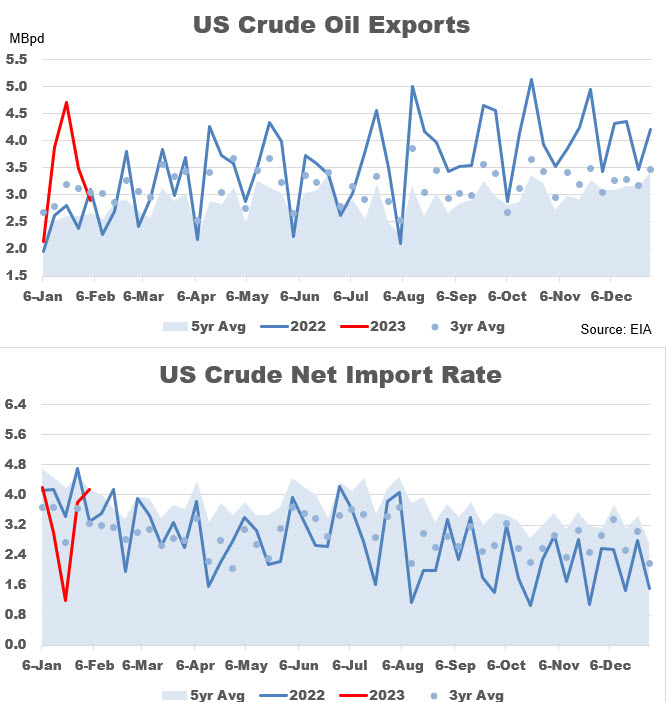
U.S. crude oil exports and net import rate
U.S. oil producers will certainly contend with competition from the Organization of the Petroleum Exporting Countries (OPEC) — although one of the world’s largest exporters, Russia, will experience declining output amid sanctions by the European Union and the international Group of Seven (G7) countries that include some of the world’s largest economies.
“The prospects for Russian oil production in the near-term are affected most significantly by the formal and informal sanctions on imports of Russian oil. Further out, the outlook is most heavily influenced by the impact of sanctions on Russia’s access to western technology and investment,” said bp in their 2023 energy outlook.
Oil major bp expects Russian oil output to decline from about 11.5 million bpd in 2019 to between 5.5 and 6.5 million bpd in 2035 in an accelerated outlook that includes a quick transition to net zero carbon targets globally or to around 8.5 million bpd in 2035 and 7 million bpd in 2050 amid a slower global transition to net zero, in which global oil demand hovers near 100 million bpd through most of this decade.
For more refined fuels market analysis, visit DTN Energy Insights.

About the author
Brian L. Milne
Brian L. Milne is a 28-year veteran of the energy industry, and served in multiple roles at DTN, including editor and analyst. Milne delivered dozens of presentations on a wide range of topics discussing the energy markets and has been quoted widely in the media, including the Wall Street Journal, Barron’s, USA Today, Newsweek, CNN, National Public Radio, and major regional news outlets. He has authored numerous articles for international magazines, exploring market dynamics and providing forward-thinking commentary and analysis. Milne graduated from Monmouth University in New Jersey with a Bachelor of Arts in history and an interdisciplinary in political science (magna cum laude).











 Comprehensive weather insights help safeguard your operations and drive confident decisions to make everyday mining operations as safe and efficient as possible.
Comprehensive weather insights help safeguard your operations and drive confident decisions to make everyday mining operations as safe and efficient as possible. Learn how to optimize operations with credible weather and environmental intelligence. From aviation safety to environmental compliance, our comprehensive suite of solutions delivers real-time insights, advanced forecasting, and precise monitoring capabilities.
Learn how to optimize operations with credible weather and environmental intelligence. From aviation safety to environmental compliance, our comprehensive suite of solutions delivers real-time insights, advanced forecasting, and precise monitoring capabilities. 

